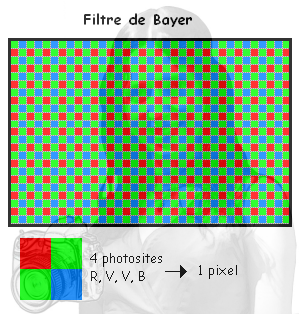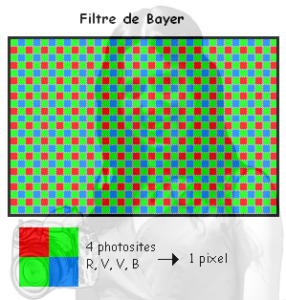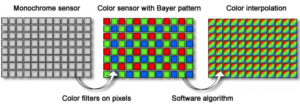
PIXEL vs PHOTOSITE
Jul 31 2018
The photosite is found on the digital image sensor in a camera. The sensor array is made up of millions of individual photosites.
The difference between a photosite and a pixel. A PIXEL (derived from: picture element) is a unit of color information that contains values of red, green and blue. It is the smallest component of an emissive or digitally projected picture.
A digital image is composed of PIXELS . Each pixel in an image gets its data for light intensity and colour from a corresponding ‘pixel’ on the digital image sensor.

Originally the term ‘pixel’ referred to the electric component that was sensitive to light on the sensor. Once light impacted the tiny component it excited a small electric potential that could then be detected. Thus, data on incoming light could be collected. An array of tiny sensors of this type (millions of them) can be used to form a digital image sensor for use in a camera.
A PHOTOSITE (or, more scientifically: a sensel) is a light-sensitive component of a digital imaging sensor. There are millions of them on our camera sensors and their job is to gather photons of light reflected off the objects we’re photographing. A photosite is very different from a pixel. Many people call photosites “pixels” but THEY ARE WRONG. It’s VERY important to understand the distinction because they are not always equal. The number of photosites on a sensor does not always equal the number of pixels in an image.
The color information in a pixel requires information from MULTIPLE photosites on a sensor.
Photosites, themselves, are colorblind. They can only collect photons of light and cannot discern the particular wavelength of those photons. to get color chroma manufacturers place a tiny colored filter on top of each sensor photosite (red, green or blue) and then that photosite only captures photons of that color. pixel cannot be created from the information of only one photosite (except from a black & white sensor)! A pixel at the same point in the image as a photosite has to glean color information from other photosites around it in order to get full RGB information to be a pixel. It’s a vitally important distinction to make. They’re NOT megapixels on a sensor – they’re megasensels (millions of sensels). They’re pixels in the final image. The actual number of pixels in a final image depends on the size and definition of the display you’re looking at. But every pixel contains a value for red, green and blue information.

Each tiny photosite senses a tiny part of the light coming through the lens and records data on that light.
![]()
CJ Rajkumar
Author/Cinematographer
